Avignon is a historic city in the Provence-Alpes-Côte d’Azur region of southeastern France. Located on the banks of the Rhône River, Avignon’s historic city centre is listed as a UNESCO World Heritage site due to its importance in European history during the 14th century. During this period, Avignon was the seat of seven consecutive Popes. Much of the city’s medieval and papal history can still be seen today. It’s also one of the few cities in France with well-preserved medieval walls and fortifications. Inside the walls, the bustling old town is packed with impressive historic monuments and atmospheric streets. There are many things to see in Avignon and the best way to explore the old town is on foot.


A leisurely walk around the old town’s maze of streets is the best way to explore Avignon. The map above traces the walking route I took to see the main sights of Avignon.
Medieval walls
I started off at the parking area near the Rhône River and entered the old town through the Poterne de l’Oratoire, a doorway in the medieval walls. I took a few moments to admire the impressive medieval walls before entering.

I continued through the Passage de l’Oratoire and into Rue Saint-Agricole. I stopped for a peek inside the Église Saint-Agricole, a 7th century Gothic church.

Place de l’Horloge
Continuing along Rue Saint-Agricole, I soon arrived in the heart of the old town: Place de l’Horloge. This beautiful square is lined by trees and cafés, and is home to the City Hall (Hôtel de Ville) and Opera House.


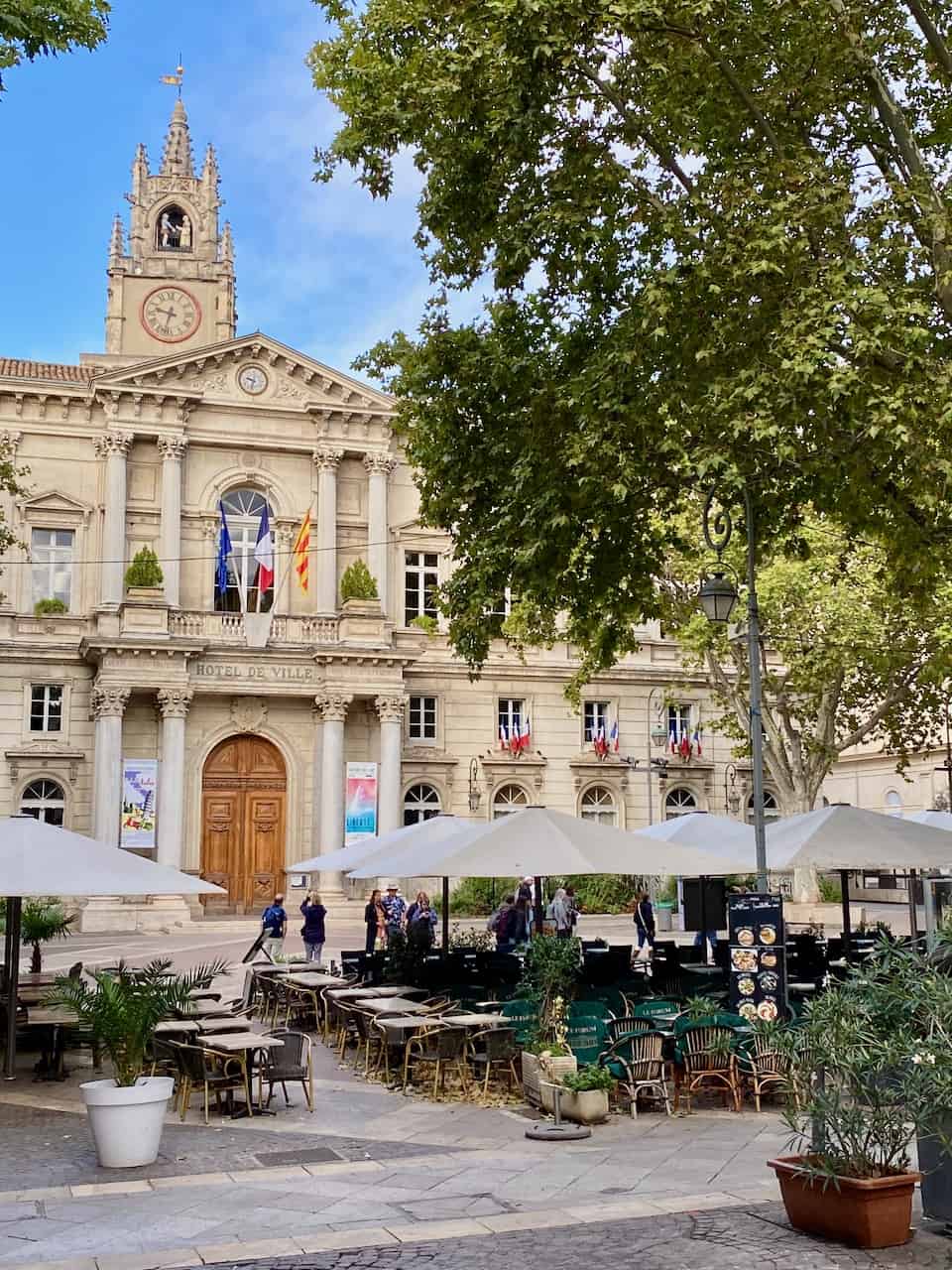
As I strolled around the square, I noticed the first of many trompe l’œil windows. I love street art and trompe l’œil is an especially cheerful form of street art in southern France (this can also be seen in Montpellier street art) where windows or walls depict real life scenes. In Avignon, various windows across the city centre frame scenes from the Festival d’Avignon, a wonderful way for street art fans to discover the city!

Jardins des Doms
I continued up the road past the Popes Palace to Jardins des Doms, a hilltop park. I made this little diversion to visit the observation points, which offer views of the Rhône River and another Avignon icon: the Pont d’Avignon (or Pont Saint-Bénézet). This 12th century bridge, largely destroyed by floods, is particularly famous in France as it features in a kids’ song. The bridge originally had 22 arches but only 4 remain today.
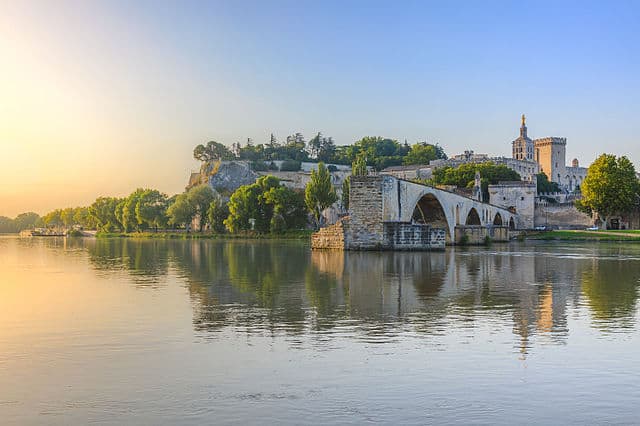
Popes Palace
From Jardins des Doms, I backtracked to arguably the most iconic historic monument in Avignon: the Popes Palace (Palais des Papes) and adjacent Cathedral. Between 1309 and 1377, Avignon was the seat of seven consecutive Popes. Why were the Popes in Avignon and not Rome? I recommend reading about the Avignon Papacy, an intriguing tale of power, influence and a French king.

Constructed in the early-14th century, the palace is one of the largest medieval Gothic structures in Europe. I recommend going on a tour of the palace to learn more about the Avignon Papacy and to see its impressive interior.


Basilique Saint-Pierre
After touring the Popes Palace, I got a bit lost in the maze of alleys behind the palace and stumbled upon a quaint square behind Basilique Saint-Pierre. The Basilique Saint-Pierre is a gorgeous 14th century church, with especially ornate doors. I decided to stop for lunch here, at the delightful Restaurant L’Épicerie Avignon. The lunch platter was plentiful and delicious and I absolutely loved the atmosphere!


Les Halles d’Avignon
From the Basilique, I continued my walk in the direction of my next stop, Les Halles (Avignon food market). Along the way, I passed the historic Synagogue, one of the oldest continually operating synagogues in France, and the Tour Saint Jean, a medieval tower.


You can’t miss Les Halles, with its vertical garden façade. Inside, I found a fantastic food market with lots of fresh local produce, seafood, cheeses, meats and spices. Les Halles is a fantastic place for lunch! I was still full from my lunch but I couldn’t resist ordering a simple yet divine seafood platter, and a glass of wine.
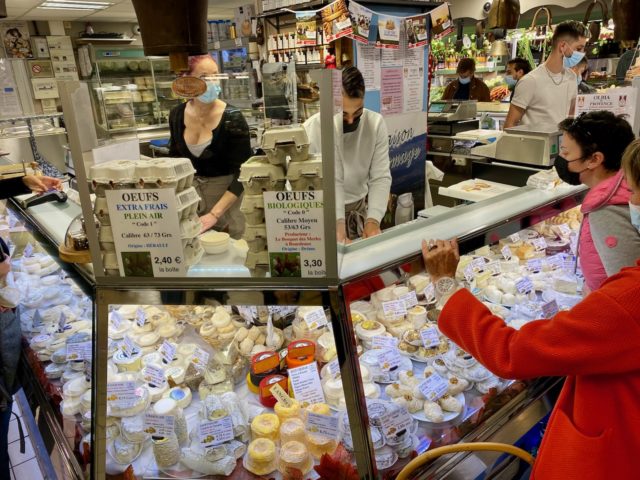
Streets in the old town
After my (second) lunch at Les Halles, I wandered aimlessly around the atmospheric streets and lanes between Les Halles and the Lapidaire Museum. I loved Rue de la Bonneterie, with its many shops, boutiques and small eateries. If you’re still feeling peckish after Les Halles, check out the croque monsieur at Croc & Vous. Opposite Croc & Vous, you’ll find the beautiful blooms and Insta-perfect façade of Le Garden.

As you explore this area, look out for Rue des Fourbisseurs, with its hanging sunflowers.

Museums
I soon found myself in front of the imposing Musée Lapidaire (Lapidary Museum). Housed in a beautiful 17th century church, the museum features Greek, Roman and Etruscan sculptures and other objects. From there, I wandered along the Rue Joseph Vernet, past two other museums: the Musée Requien (natural history museum) and the stately Musée Calvet, with its collection of Egyptian, Greek and Roman artifacts.

I ended my walk around Avignon where I started, at the Poterne de l’Oratoire. This walk can easily be done in a few hours but take your time or, even better, spend a few nights in Avignon.
Rue Teinturiers
One street I didn’t include in this walk but which I visited years ago is Rue Teinturiers. This gorgeous, centuries-old street runs along a canal with watermills.

Other places near Avignon to visit
Avignon is a wonderful city to explore and it also makes for a great base from which to visit other places in the Provence such as the famous lavender fields and Châteauneuf-du-Pape, a famous wine area just north of Avignon. Read more about things to do in Châteauneuf-du-Pape. Another nearby city to visit is Nîmes, with its amazing Roman monuments. Read more about things to see in Nîmes. This part of France is absolutely stunning!
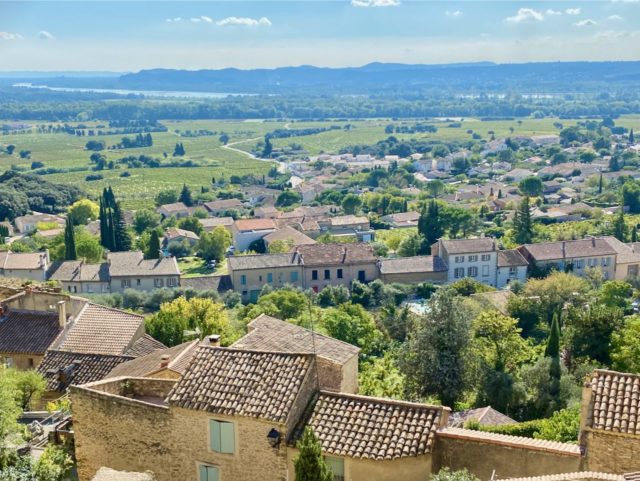

For fans of Van Gogh, there’s Saint-Rémy de Provence. If you love nature walks, there’s the Alpilles Nature Park in the hills just south of Avignon. You can combine this hike with something quite extraordinary: the Carrières de Lumières, a spectacular multimedia show inside an old stone quarry. Read about my visit to Carrières de Lumières.

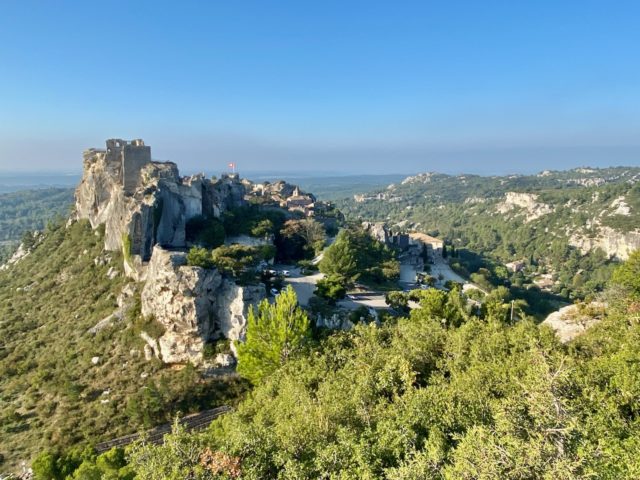

Note: my visit to Avignon was part of the itinerary of the Avalon Active and Discovery Rhône River cruise.






More Stories
Backpacking Journeys: Adventure Awaits on Every Path
Backpacking Journeys: Go Further, Explore Deeper
Backpacking Journeys: Find Solitude in Nature’s Beauty